NYC’s Forgotten ‘War on Christmas Trees’
Discover how an obscure holiday crackdown affects festive street vendors today!


Ever wondered what those beautiful, Beaux-Arts buildings are on the hill that you see from upper Manhattan? It’s the Bronx Community College, with a history connected to several of New York City’s colleges. The architecture of the campus, which it inherited from a well-known New York City private college has since been recognized on a local and national level.
Here are the top ten secrets of the Bronx Community College.
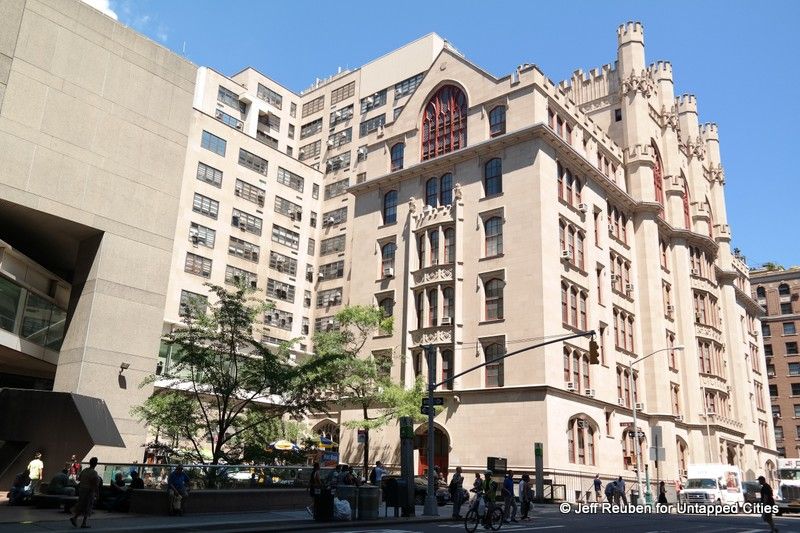
Hunter College
In 1957, a number of civic-minded individuals in Bronx County decided that the borough was in need of better education options for the people who lived in the community. Thus, Bronx Community College was born. But at the beginning, BCC classes were held at Hunter College on 68th Street in Manhattan. Then in 1959, 125 students began taking classes at the former location of the Bronx High School of Science at Creston Avenue and 184th Street.
Over the next few years, the college grew rapidly, mostly due to the fact the school started open admissions in 1970. By 1972, Bronx Community College was serving over 14,000 matriculated students, and the school occupied seven surrounding buildings. It would not be until 1973 that it would get its own campus in University Heights.
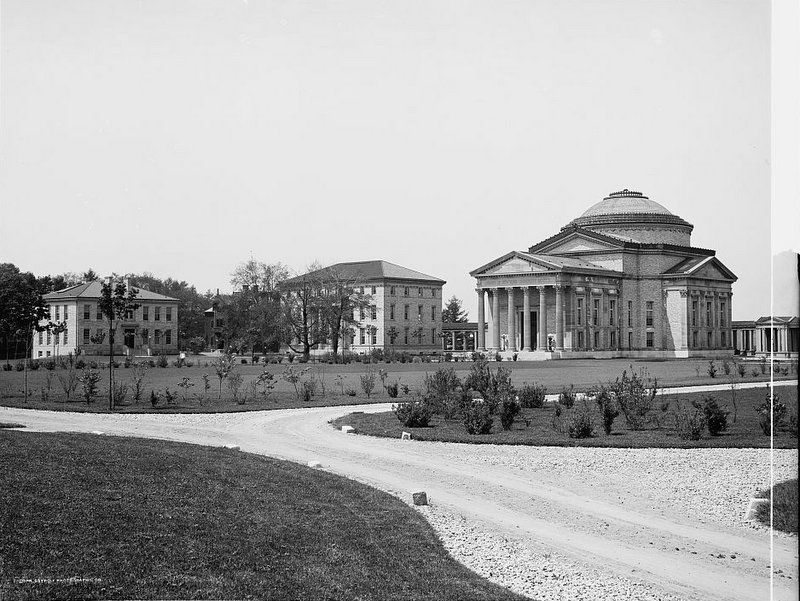
A photograph of the campus circa 1904 when it was part of New York University. Photo from Library of Congress.
In the late 1800s and early 1900s, a number of senior colleges in New York City were moving their campuses uptown in search of more space for the growing number of students enrolling. Columbia University moved its campus from 49th Street to Morningside Heights and the City College of New York moved from 23rd Street to Hamilton Heights. NYU eventually followed suit and moved its undergraduate college and engineering school to the University Heights area, but in 1973, the New York State Dorm Authority gained possession of the property as the school was experiencing a possible bankruptcy.
Beginning in the fall of 1973, all Bronx Community College classes took place at its new campus.
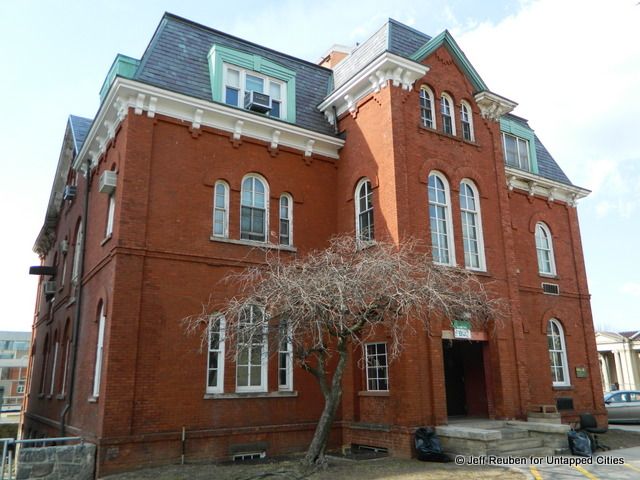
Butler Hall, former Mali Mansion, built about 1859
Mali Mansion belonged to Henry W.T. Mali, a consul of Belgian and NYU graduate, and was built around 1859. The mansion was later converted to Charles Butler Hall, the first dormitory on the NYU Campus. The dorms had 22 rooms in total and could house up to 30 students. At the time, only men were allowed to attend the University Heights campus, and they had the choice to live in Butler Hall, Gould Hall or “table board” with private families in the area.
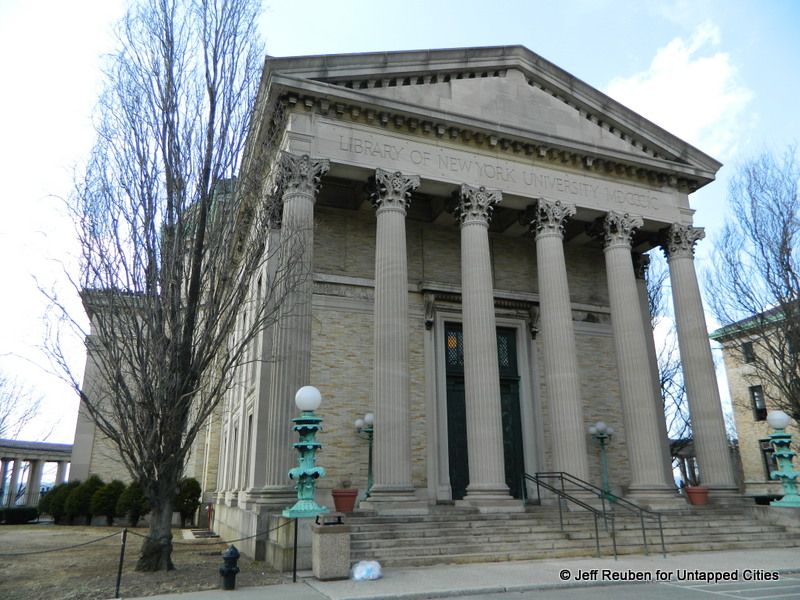
In 2012, the BCC became the first community college in America to be named a National Historic Landmark, described by U.S. Secretary of the Interior Ken Salazar as a “nationally significant example of Beaux-Arts architecture.” Designation was one of the priorities for BCC President Carole Berotte Joseph, who took office in 2011. Among the specific buildings included in the landmarking were Gould Memorial Library, the Hall of Fame of Great Americans, Hall of Languages, Philosophy Hall and Havemeyer Lab.
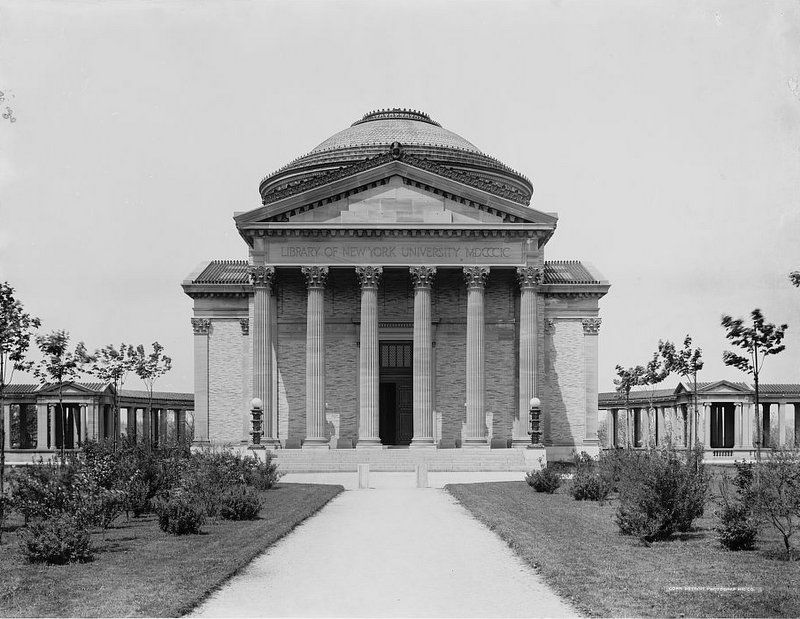
New York University, circa 1900-1910. Via Library of Congress Prints and Photograph Division. Photo by Detroit Publishing Co.
In 1904, Stanford White of the famous McKim, Mead and White, was hired to create buildings on the former New York University Campus. He was responsible for a number of buildings around the campus, including the Hall of Languages, the Cornelius Baker Hall of of Philosophy and the Gould Memorial Library, pictured above. The buildings were sponsored by wealthy patrons: Mrs. John Steward Kennedy funded the hall of philosophy in memory of her father, while the Gould Memorial Library was sponsored by Helen Miller Shepherd, wife of millionaire Jay Gould. White was involved in other notable projects around the city, including Madison Square Garden and the Washington Square Arch.
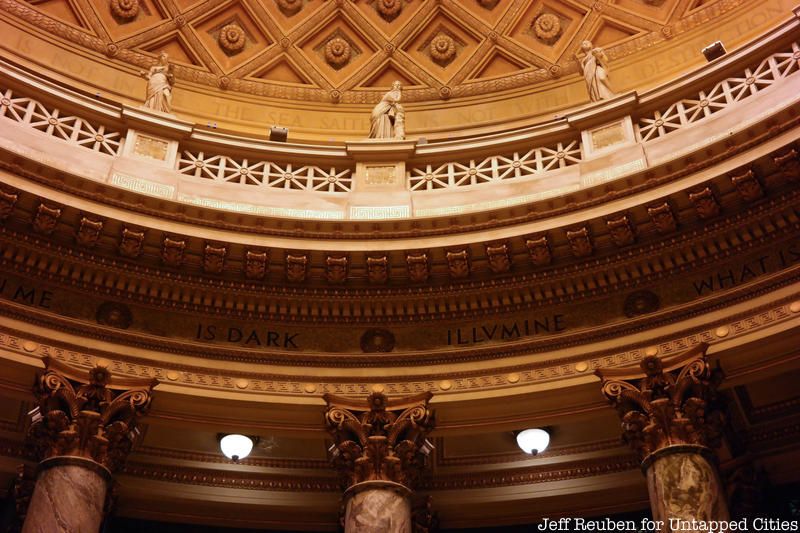
The domed Gould Memorial Library was designed as the centerpiece of the Bronx Community College. An anarchist bombed the space with a molotov cocktail in 1969, and the blast destroyed part of the Tiffany glass skylight, the stage, an organ, and many of the wooden seats.
It is no longer a library but function as offices. Inside, the library was appointed with marble, stone sculptures and architectural elements, Tiffany glass, bronze, and a coffered ceiling. Open House New York calls is”one of the most breathtaking rotundas in the city.”
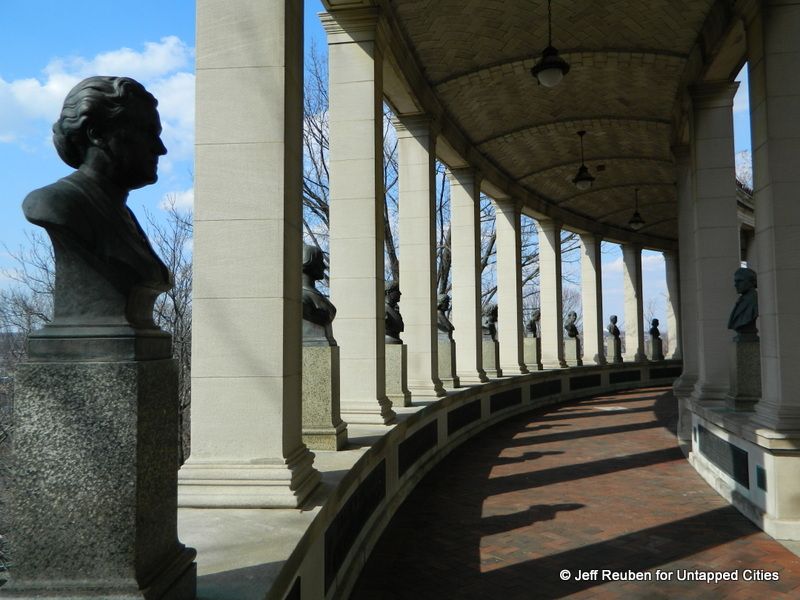
The Bronx Community College Hall of Fame for Great Americans is located at the rear of the Gould Memorial Library overlooking the view. It was built to honor famous people who were accomplished in 15 fields, including business, theology, music, medicine, law and inventing. Any American or American organization could nominate a hall of fame candidate for consideration, but nominees had to fit specific criteria. To be eligible, nominees had to be native-born American citizens or have naturalized since 1914. In addition, nominees also had to have been dead for 25 years, a rule put in place since 1922. Before, nominees only had to be dead 10 years. Notable individuals in the hall of fame are Abraham Lincoln, Susan B. Anthony, Alexander Graham Bell, Alexander Hamilton, John Philip Sousa and the Wright Brothers.
There have not been any busts added to the hall of fame since 1973 though there have been inductees. Clara Barton, Luther Burbank and Andrew Carnegie were all named to the hall of fame in 1976, but their busts remain unexecuted. In September 7, 1979, the Hall of Fame Complex was listed on the National Register of Historic Places by the U.S. Department of the Interior.
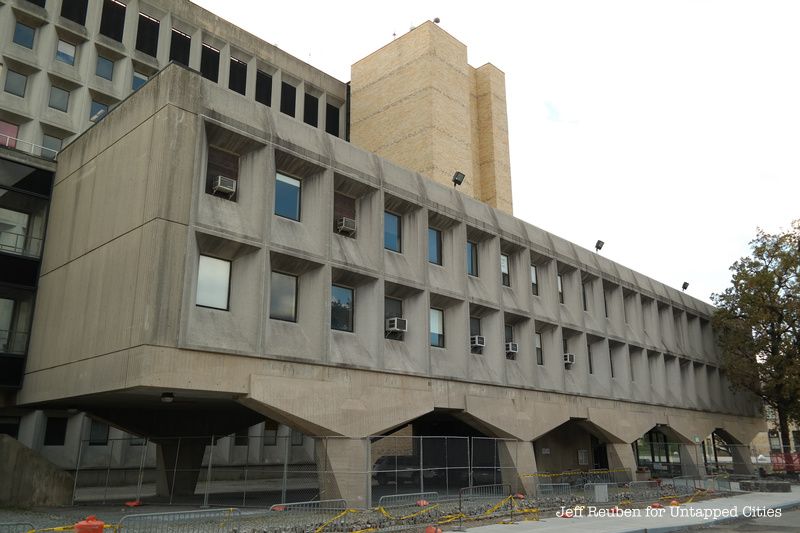
Every fall, Open House New York opens off-limits historical landmarks, buildings and attractions for the public to tour. In 1956, New York University asked architect Marcel Breuer to come up with a “comprehensive design” for replanning the campus. Between the years of 1959 and 1970, Breuer, along with Hamilton Smith and Robert F. Gatje built a number of buildings, including Silver Hall (now known as Colston Hall), Tech I (now Polowczyk Hall), Tech II (Meister Hall) and Begrisch Hall, which is now a historical landmark. Visitors can tour these buildings in October.
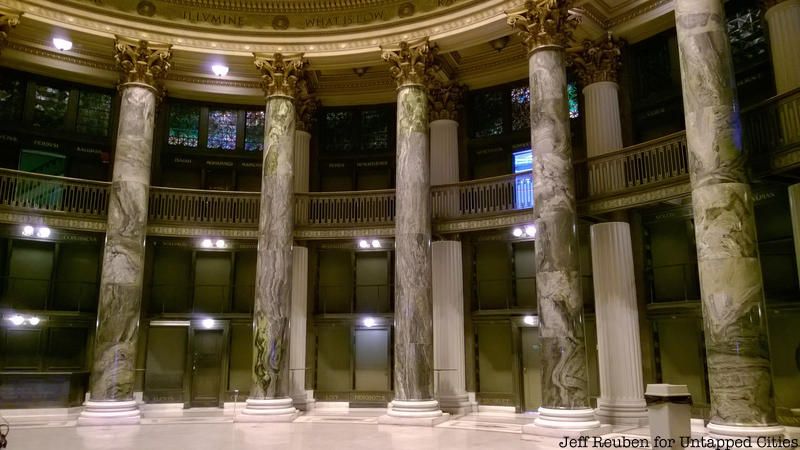
As a New York Times article in November 2015 pointed out, the Gould Memorial Library is in need of restoration and is in danger of disrepair. It was named in March 2016 was named as one of the “Seven to Save” on the Preservation League of New York State’s Endangered Property List. It is estimated that more than $50 million may be needed for its restoration.
Architect Stanford White’s great-grandson, Samuel G. White, is chairing a group called Save Gould Memorial Library to study what is needed for a restoration to happen and raise funds.
Next, discover the secrets of Columbia University. Keep up with the author @jen_bagcal
Subscribe to our newsletter